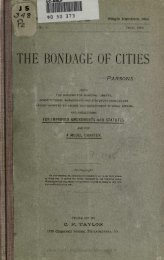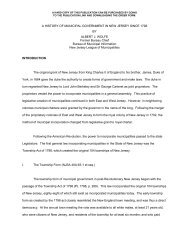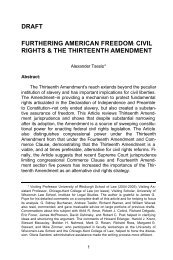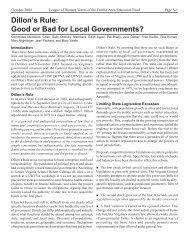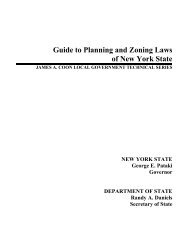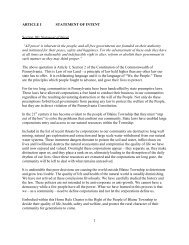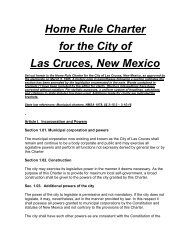The British Empire and Famine in Late 19th Century Central India
The British Empire and Famine in Late 19th Century Central India
The British Empire and Famine in Late 19th Century Central India
You also want an ePaper? Increase the reach of your titles
YUMPU automatically turns print PDFs into web optimized ePapers that Google loves.
gra<strong>in</strong>s, fruits, roots, nuts, honey, vegetables, flowers, medic<strong>in</strong>al herbs, gums, plants,<br />
spices, lac, game, etc., removed the fam<strong>in</strong>e <strong>and</strong> drought cushion on which the people had<br />
traditionally relied <strong>in</strong> times of crisis. Accord<strong>in</strong>g to the well known fam<strong>in</strong>e scholar B.M.<br />
Bhatia, this resulted <strong>in</strong> general environmental deterioration that transformed m<strong>in</strong>or<br />
calamities <strong>in</strong>to disastrous events tak<strong>in</strong>g millions of lives. 22<br />
Bipan Ch<strong>and</strong>ra, Sumit Sarkar, <strong>and</strong> Amiya Bagchi <strong>in</strong> their studies have shown that<br />
the lack of economic diversity was the reason for <strong>India</strong>‟s backwardness <strong>and</strong> poverty<br />
under the <strong>British</strong> <strong>Empire</strong>. Society was restra<strong>in</strong>ed to rema<strong>in</strong> agrarian <strong>and</strong> feudal. <strong>The</strong><br />
<strong>British</strong> imperial policies prevented the transformation of <strong>India</strong>n economy from agrarian<br />
to <strong>in</strong>dustrial by skimm<strong>in</strong>g off the raw material <strong>and</strong> revenues without plow<strong>in</strong>g anyth<strong>in</strong>g<br />
back <strong>in</strong> return. Trapped <strong>in</strong> this classical political economy of the <strong>British</strong> Raj, <strong>India</strong><br />
exported raw material <strong>and</strong> consumed f<strong>in</strong>ished goods. State <strong>in</strong>vestments mostly went <strong>in</strong>to<br />
ma<strong>in</strong>ta<strong>in</strong><strong>in</strong>g the <strong>in</strong>stitutions of control like the vast army, police, bureaucracy, <strong>and</strong> the<br />
espionage network of the <strong>Empire</strong>. Very little was made available for the development of<br />
human capital resource or even the economic <strong>in</strong>frastructure that would benefit the general<br />
populace. <strong>The</strong> colonial state <strong>and</strong> local moneylenders became parasitic classes that were<br />
not <strong>in</strong>terested <strong>in</strong> either economic development or improv<strong>in</strong>g the material condition of the<br />
peasantry. Commercial crops not only encroached on food gra<strong>in</strong>s but pushed peasants<br />
<strong>in</strong>to a debt cycle from which it was impossible to get out because the primary producer<br />
lost control over the crops. <strong>The</strong> burden of high state revenue dem<strong>and</strong> <strong>and</strong> government<br />
refusal to remit even <strong>in</strong> times of fam<strong>in</strong>e made the suffer<strong>in</strong>g of the people <strong>in</strong>tense <strong>and</strong><br />
death difficult to allude. 23<br />
7






